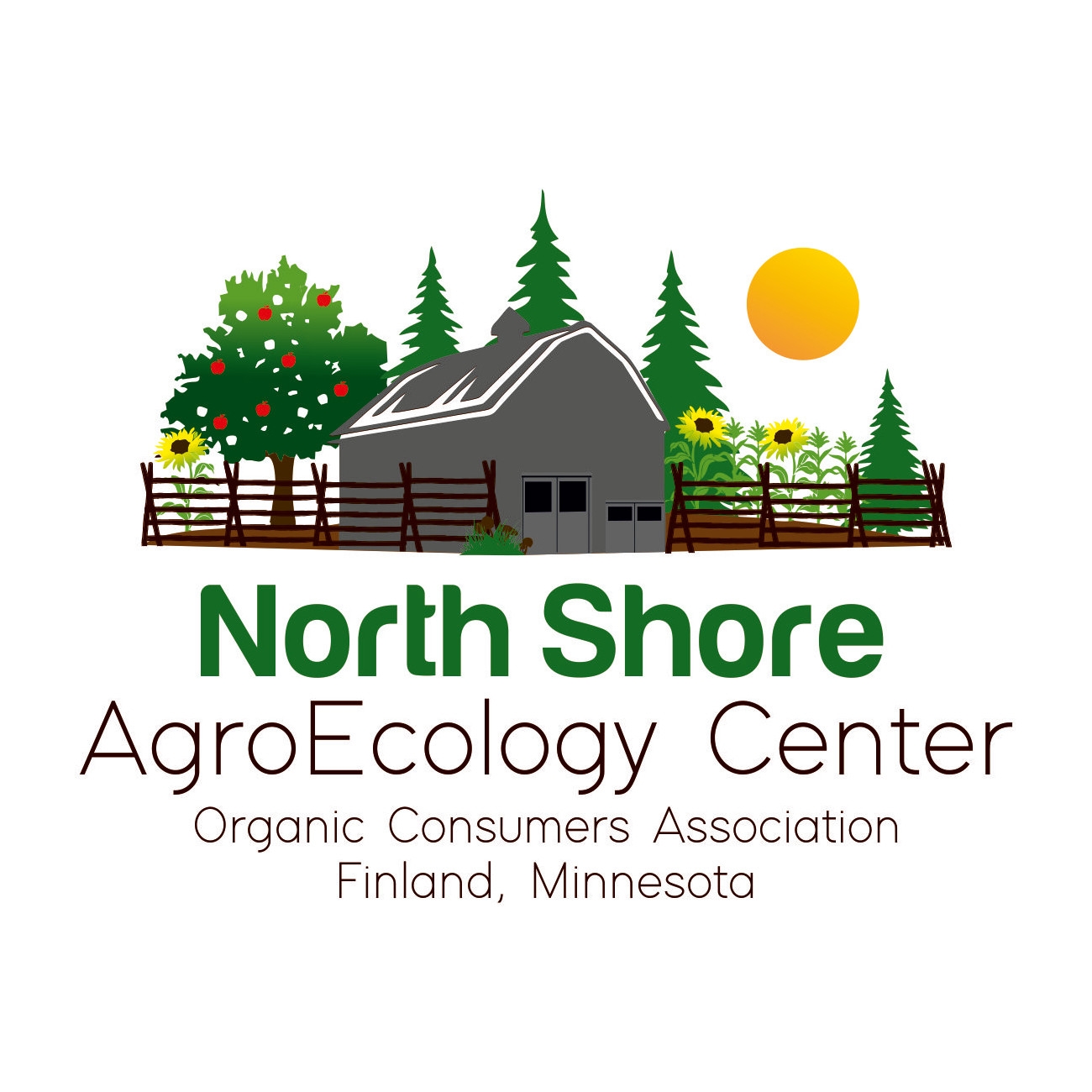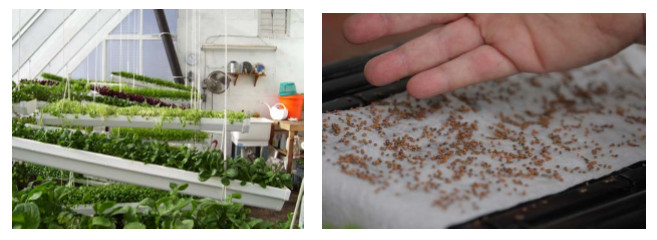The first major element designed and constructed at the AgroEcology Center was the Deep Winter Greenhouse. To read more about the Deep Winter Greenhouse project, visit the Deep Winter Greenhouse page on our website.
The 2017 – 2018 Winter was our first full Winter growing experience and it has been filled with many good lessons. One of our primary lessons has been the Aphid explosion. The greenhouse is the perfect environment for the aphids to breed and populate; warm, moist, filled with plants and no predators. Unfortunately, due to a series of factors, we sadly did not notice the first aphid advance until our plants were over-run. At that point, our first attempt at control was to harvest, remove all plants, re-plant and then use an organic insecticidal soap to keep them at bay. This unfortunately did not keep them in check, and eventually they came roaring back into action. Okay, back to the drawing board.
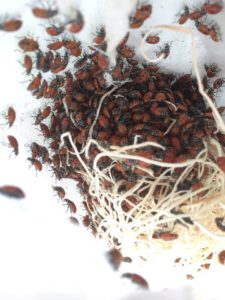
When reviewing greenhouse literature, the general approach is first and foremost embracing an ethic of bringing absolutely nothing into the greenhouse that isn’t sanitized, fumigated and guaranteed 100% free of aphids. For us, the reality is, there would be no way to NOT introduce aphids to the greenhouse. Our land is filled with aphids, especially the woods in the Fall, and aphids love catching rides on your clothes from site to site. Short of installing a bio-fumigation chamber prior to greenhouse entry, they will find a way.. Nature always does. So we feel that rather than stressing ourselves out over trying to keep aphids out of the greenhouse, we need to accept that they will get in, and that it is a perfect habitat for a population explosion.
So then we need to figure out how to manage the aphids in the greenhouse. Notice we say “manage” not “eliminate”. Again, we feel they will never be eliminated from this type of environment, so how can we create a balance where they may be present but not at a population level that is harmful. So here is where we turned to the predator options. Their primary predators are Ladybird Beetles (Hippodamia convergens), Parasitic Wasps (Aphidius colemani), Green Lacewings (Chrysoperla rufilabris) and the Predatory Midge (Aphidoletes aphidimyza). Seeing how we have a year-round greenhouse, we decided our goal was to establish base populations of several aphid predators in the greenhouse and see how it goes. Which of course meant we would always need a population of aphids to keep the predator populations around. In Nature we would call this a dynamic balance that ebbs and flows.
First we decided to incorporate the Ladybird Beetles and see how they interacted with the situation. An adult Ladybird Beetle will eat up to 5,000 aphids before they lay their eggs. Once the larvae emerge, they will continue the rampage, eating 50-60 aphids a day for about 3-4 weeks until they pupate into an adult and start the process all over.
It is often said that any type of predatory control of aphids is ineffectual with high aphid populations. To address this, (because we most certainly had high aphid populations present), we went with a relatively large number of Ladybird Beetles for the amount of space we were working with. We ordered 4,500 Ladybird Beetles from Arbico Organics (a typical number for 2500 sq ft, our space is about 300 sq ft). Arbico Organics actually grows their own insects, which is ideal, as many companies will actually go out and collect wild populations which some people feel isn’t the best option.
We released the population over two weeks to watch how they interacted with the environment and the aphid population. One aspect of Ladybird Beetles that make them quite useful in our situation is that they can simply be stored in the refrigerator for a period of time prior to release (some say weeks, others months), and then introduced in small populations. Some sources even suggest that a period of cold storage is actually necessary to initiate the breeding cycle.
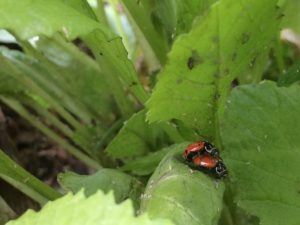
One of the biggest downsides of using Ladybird Beetles in the garden is that they are highly nomadic, and once released, will simply pack their bags and fly off to greener pastures (how ungrateful!). The beauty of the Winter Greenhouse, is that once released, they have no means of escape. While they would indeed congregate around the windows, they also readily migrated through the greenhouse and most certainly were all over the plants.
Another concern was that they would likely not reproduce in a greenhouse environment, especially at this time of year. Well, we found this not to be the case (and perhaps this was partially due to the fact that we stored them for a few weeks in the refrigerator). They have very prolifically bred and laid eggs.. everywhere! Apparently they didn’t get the memo that they typically lay their eggs on leaves by aphid populations, not on walls, ceilings, windows, etc. So the next question was, would they hatch into the aphid-devouring larvae we have come to expect. And sure enough, a few weeks after first sign of egg clusters showed up, these primordial creatures from an aphids deepest darkest nightmares emerged. Their populations have continued to increase, and the next step will be watching for pupating.

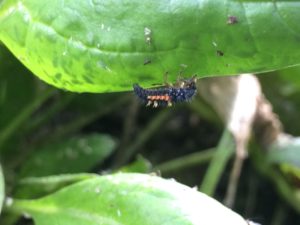
Aphids alone do not provide the perfect diet for adult Ladybird Beetles, as they also like access to flower pollen. To this end we have kept a few flowering plants in the neighborhood. We have some radishes that went to flower, nasturtiums, and an even a random flowering weed that the ladybirds seem to love, so we haven’t pulled it yet.
The next step in this journey will be bringing in a few other aphid predators and observing whether they will also go through their lifecycle. Stay tuned!
